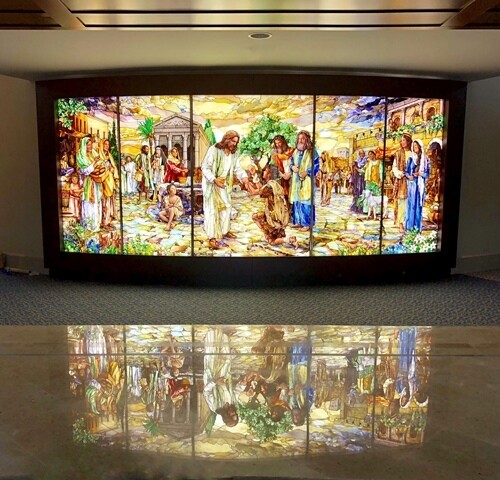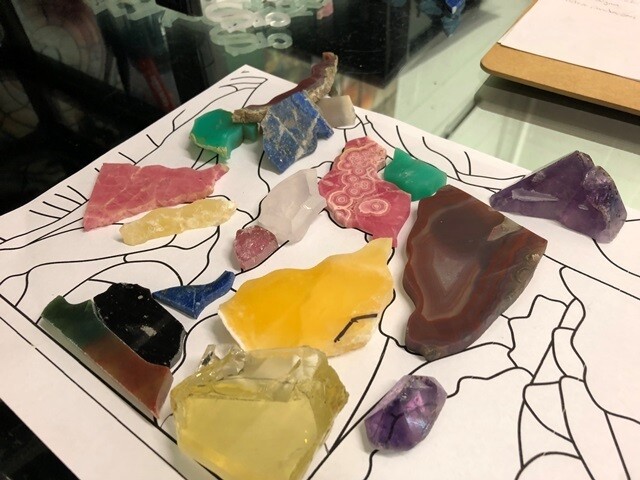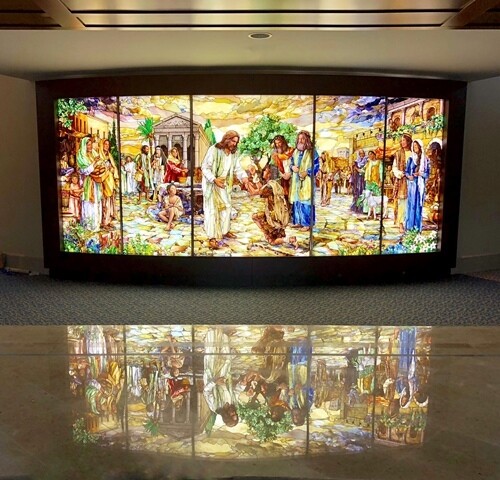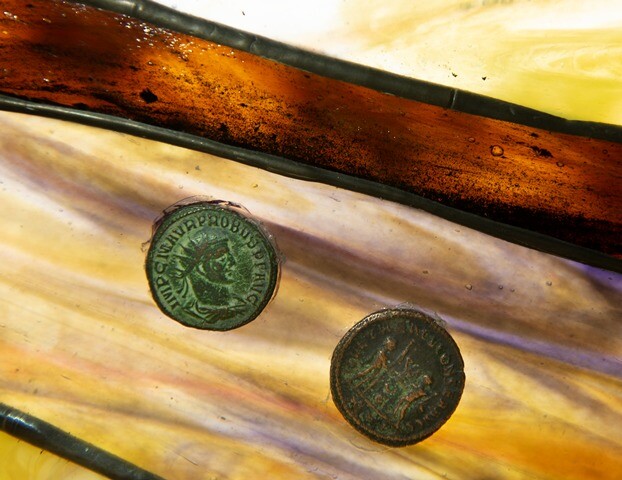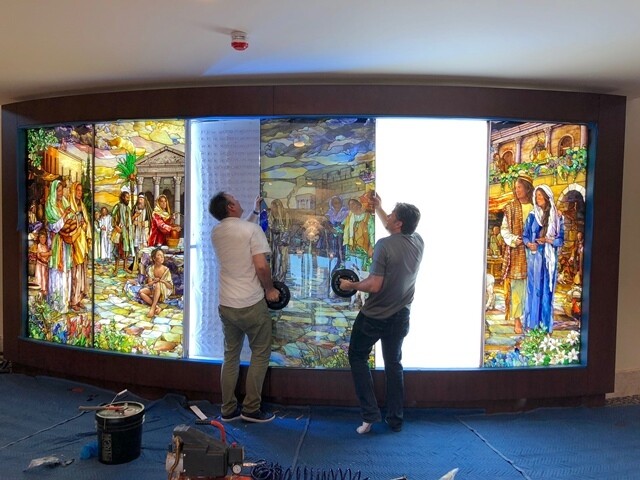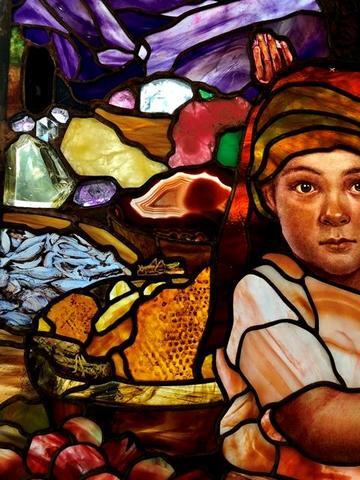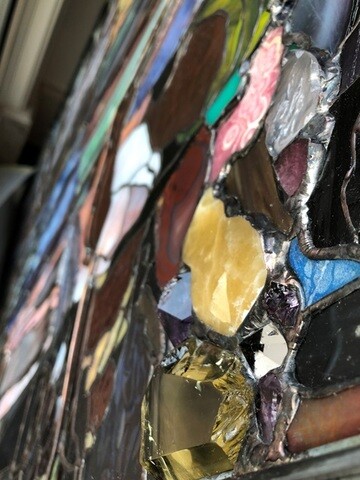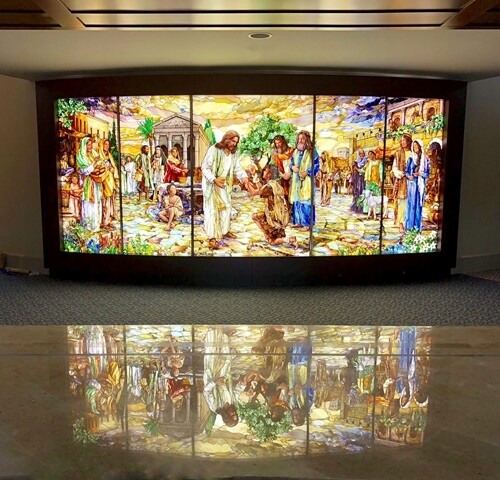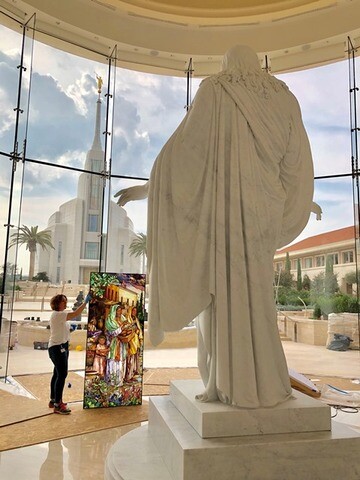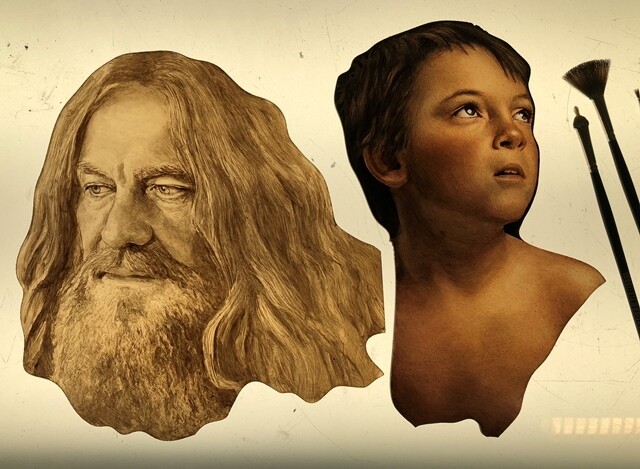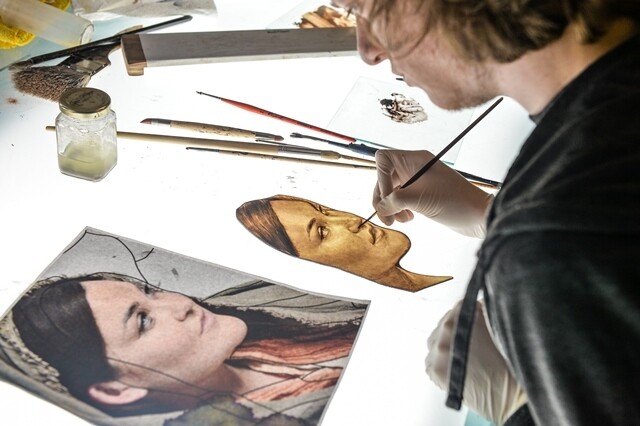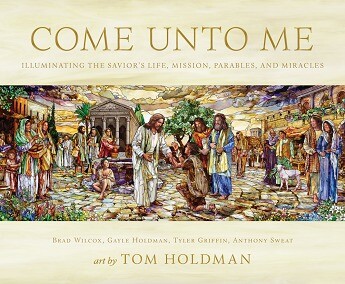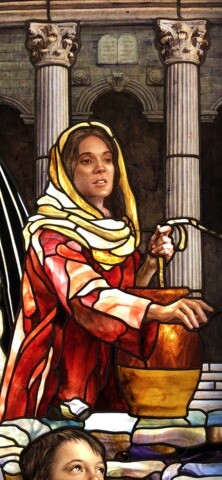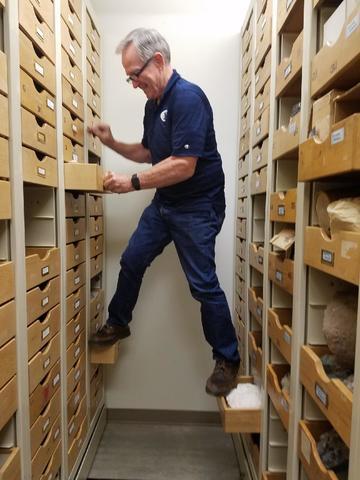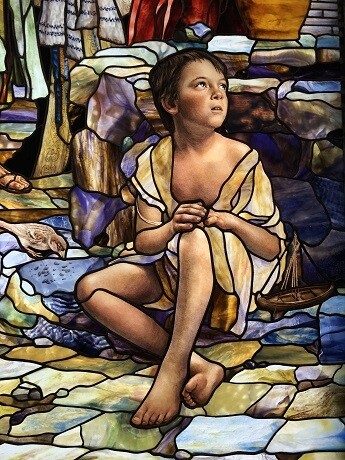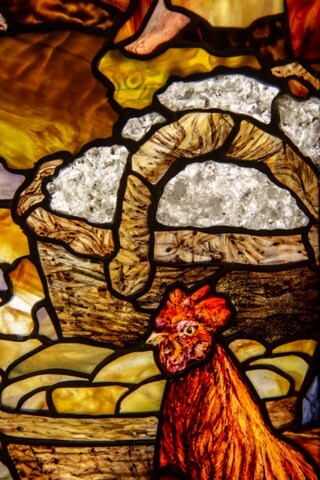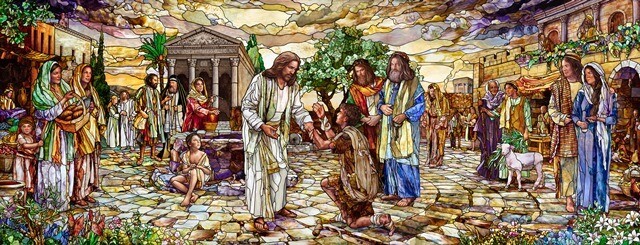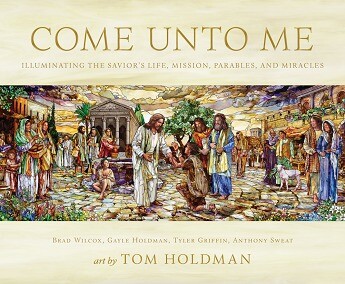Religious art can take many forms and hold many meanings for those willing to take a closer look. Whether you get to see the window in person or simply want to know more about it, here are seven insights into the symbolism and detail found within the Come unto Me stained glass mural now on display at the Rome Italy Temple Visitors’ Center.
All images courtesy of Erin Pritchett and Holdman Studios
1. The window, fitting in just a 20-foot space, represents every parable Christ taught along with miracles and other moments from His life and mission.
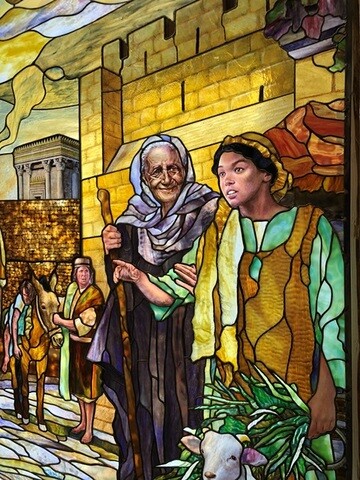
In the panel above, the Good Samaritan, the widow’s mite, shepherds at Christ’s birth, and Christ's Triumphal Entry are some of the stories and parables represented.
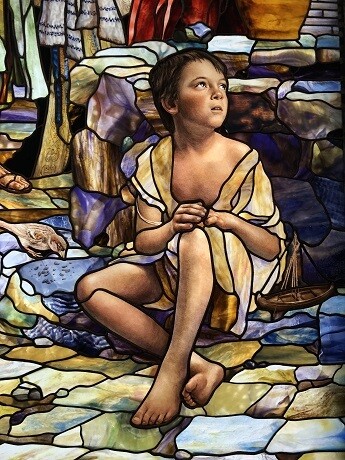
Here we see a fishing boat, a little boy, a sparrow, and a well as representations of the necessity to become as a little child, of Christ’s teachings of the Living Water, His power to calm the sea, and His love and awareness of each one of us.
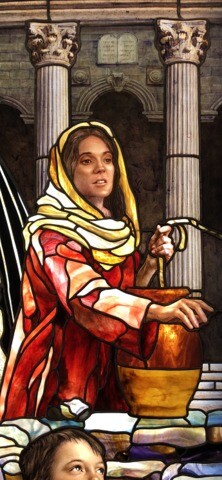
In the panel above, we see a representation of the Samaritan woman at the well, the woman with a 12-year issue of blood, and the woman taken in adultery. Also seen are the 10 commandments on stone tablets above the archway of the building.
► See more pictures like these in 20 Stunning Behind-The-Scenes Images of the Come unto Me Window
2. The Savior is the very center of the mural.
In artistic terms, Christ is the “vanishing point,” with all perspective lines pointed toward Him:
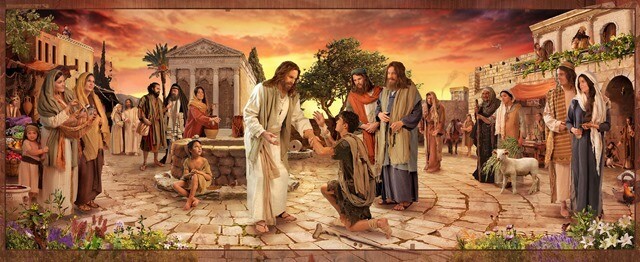
Notice the angles of the buildings, the arms of the small girl on the far left, and the woman near the well along with the young man’s crutch—all direct the view to the Savior. Even the stones on the ground are concentrically pointing toward Christ to emphasize His central role as our Redeemer.
3. The window was made from a multi-step process. Some of those steps include posing models in time-period costuming for a photo shoot, then using those photos to create a sketch, which later helps in the glass painting process.
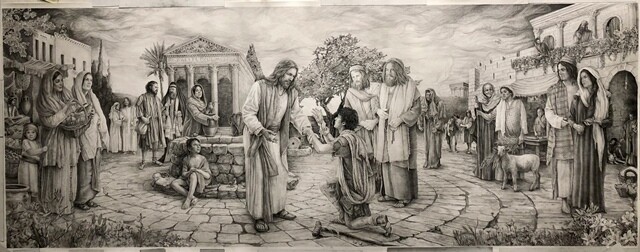
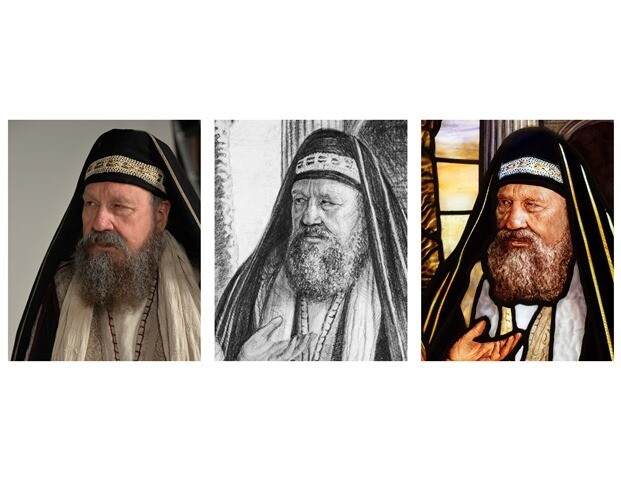
Shown above is the progression from model to sketch to glass of Nicodemus, the Pharisee.
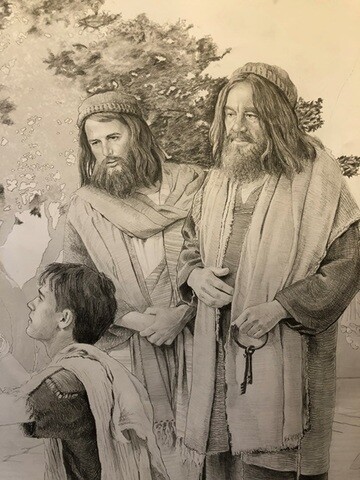
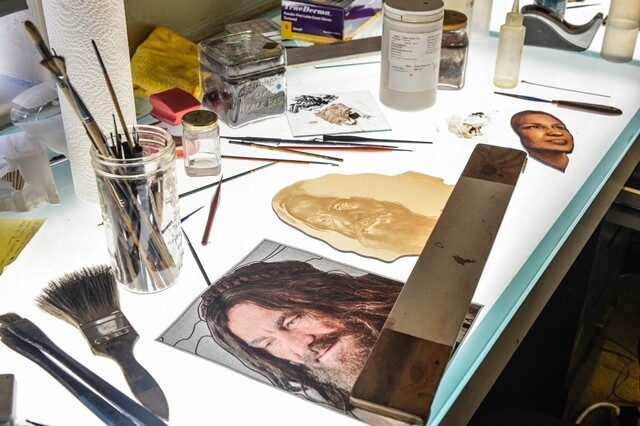
Above and below: Various stages of illustrating the apostle Peter in art glass.
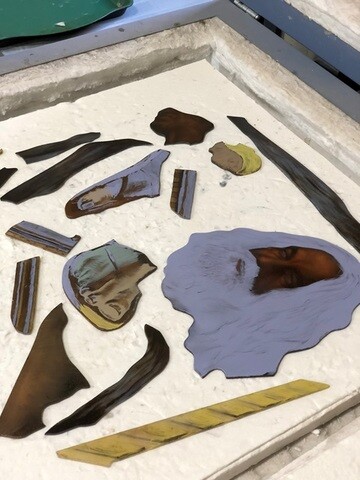
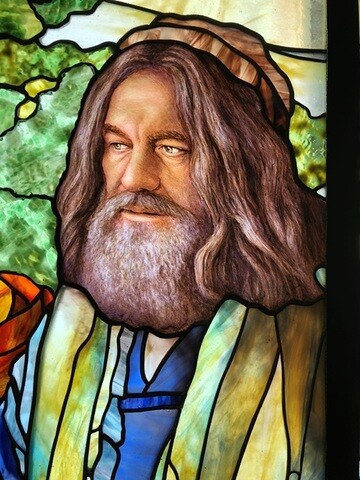
Here are different stages of Christ’s face in the artists’ efforts to illustrate His love, concern, and compassion for each of us:
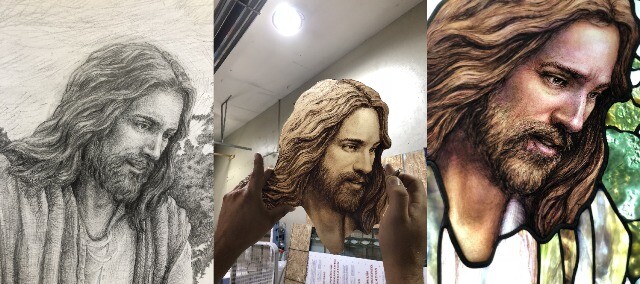
4. The window has five panels and was built using approximately 6,000 pieces of glass.
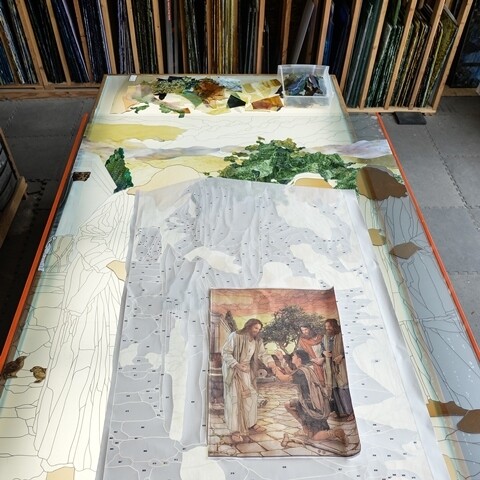
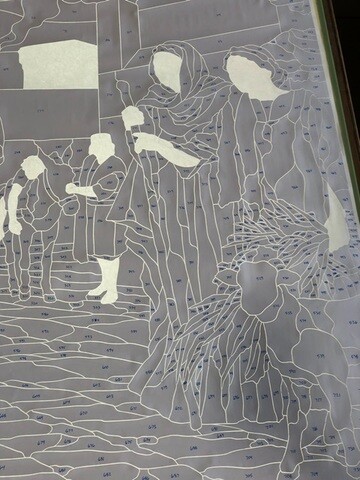
From the concept art, lead lines are drawn and a pattern made. Above are just some of the many pattern pieces. Glass is then selected for color and value and cut according to that pattern, as seen below.
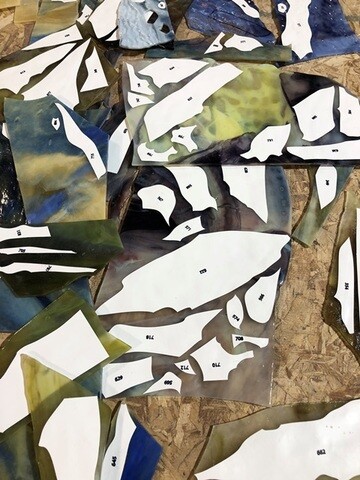
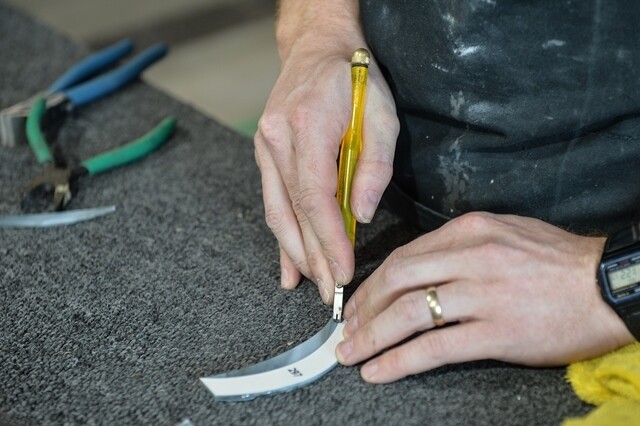
Scoring one of many glass pieces.
5. Some special items other than glass are included in the window.
Here are a few examples:
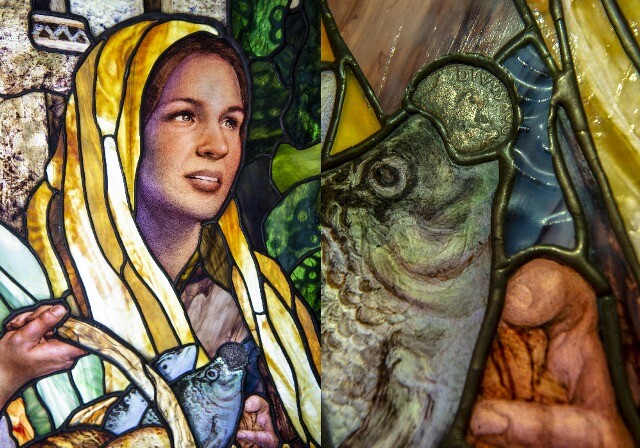
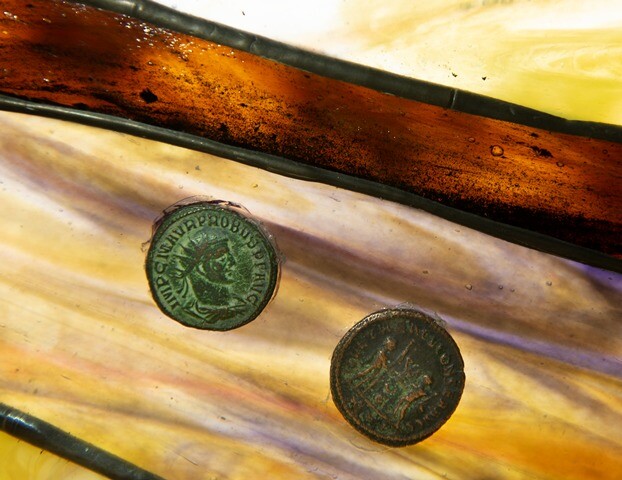
Authentic ancient coins.
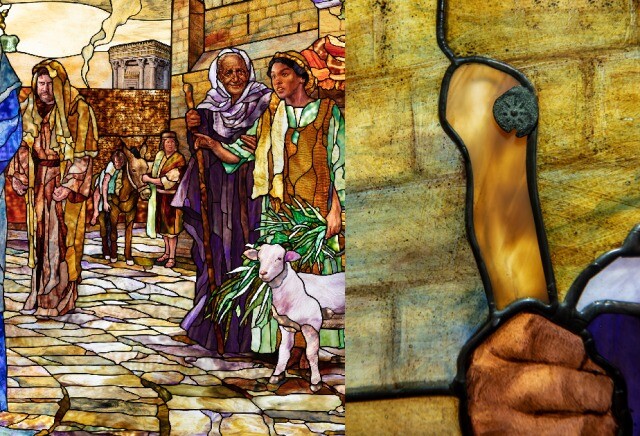
A “mite” at the top of the widow’s staff.
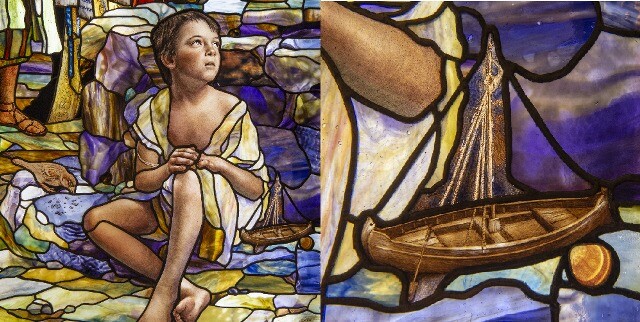
A shell from the Sea of Galilee.

A stone from the Holy Land.
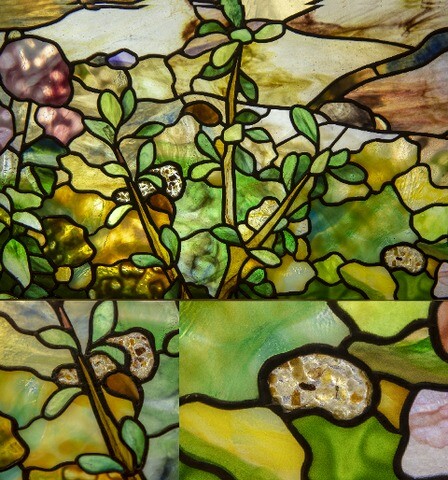
Bits of actual frankincense.
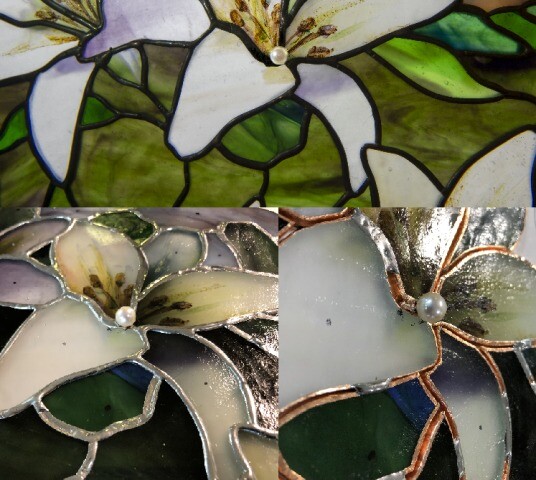
Pearl of Great Price in the middle of a lily.

Alpha and Omega symbol carved in alabaster is found on the keystone of the arch. This stone comes from Carrara—the same quarry frequented by Michelangelo and from which the Christus and 12 apostle statutes also on display at the Rome temple visitors’ center were mined.
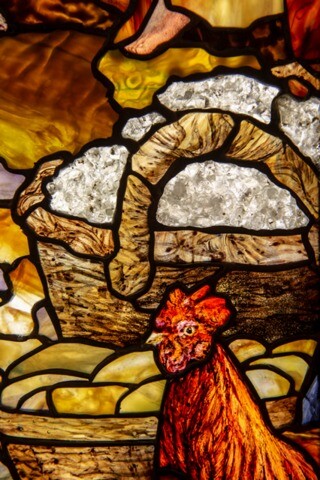
Salt from the Dead Sea.

Twelve precious stones refer to the 12 tribes, each of which was represented by a stone on the breastplate worn by High Priests of ancient Israel. Holdman Studios worked with BYU’s Department of Geology to be as accurate as possible. In the following picture of the stones, you can see the Rome temple reflected in the bottom left stone.
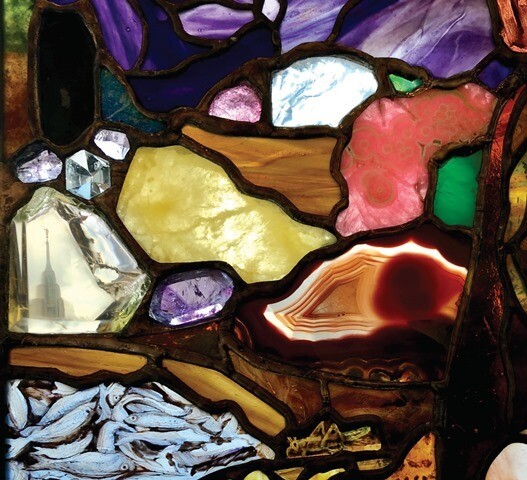
6. Finishing touches were put on the window on site in the visitors’ center.
With a gorgeous view of the Rome Italy Temple on one side and beautiful statues of Christ and His original apostles on the other, the team from Holdman Studios added the stones to the panels just before installation, as seen below:
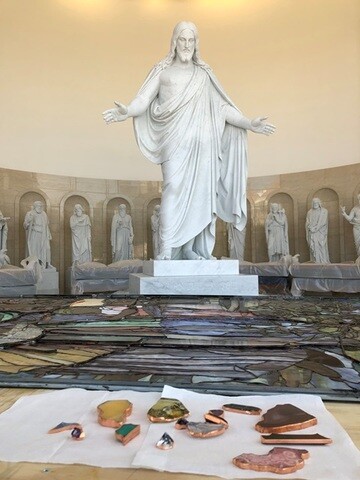
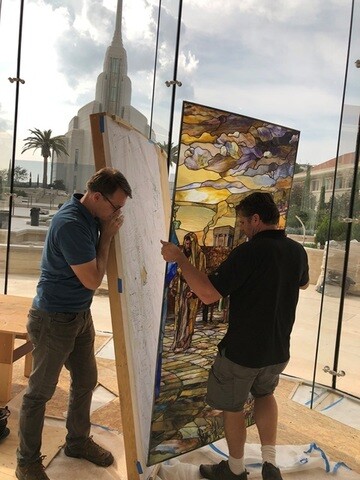
Above and below: Aaron Yorgenson and Cameron Oscarson, two of the main artists, make last-minute adjustments in the rotunda.
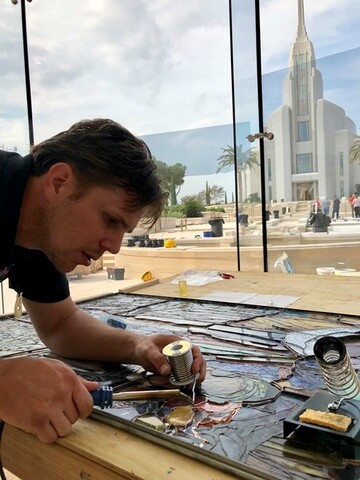
► Learn more in The Couple Behind Windows in 80 Temples + Miracles Creating Stained Glass for Rome, Texas, and More
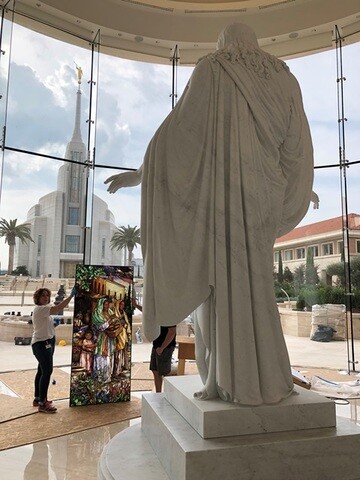
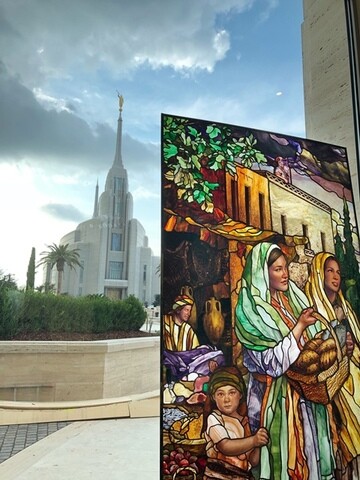
7. The window has an accompanying book that provides a deeper look at everything included in the window.
Come unto Me: Illuminating the Savior’s Life, Mission, Parables, and Miracles uses details and images from the stained glass mural to illustrate and teach of Christ and was written by Brad Wilcox, Gayle Holdman, Tyler Griffin, and Anthony Sweat, with the art by Tom Holdman. Written while the glass mural was in progress, both the window and the book added to each other in inspiring ways.
